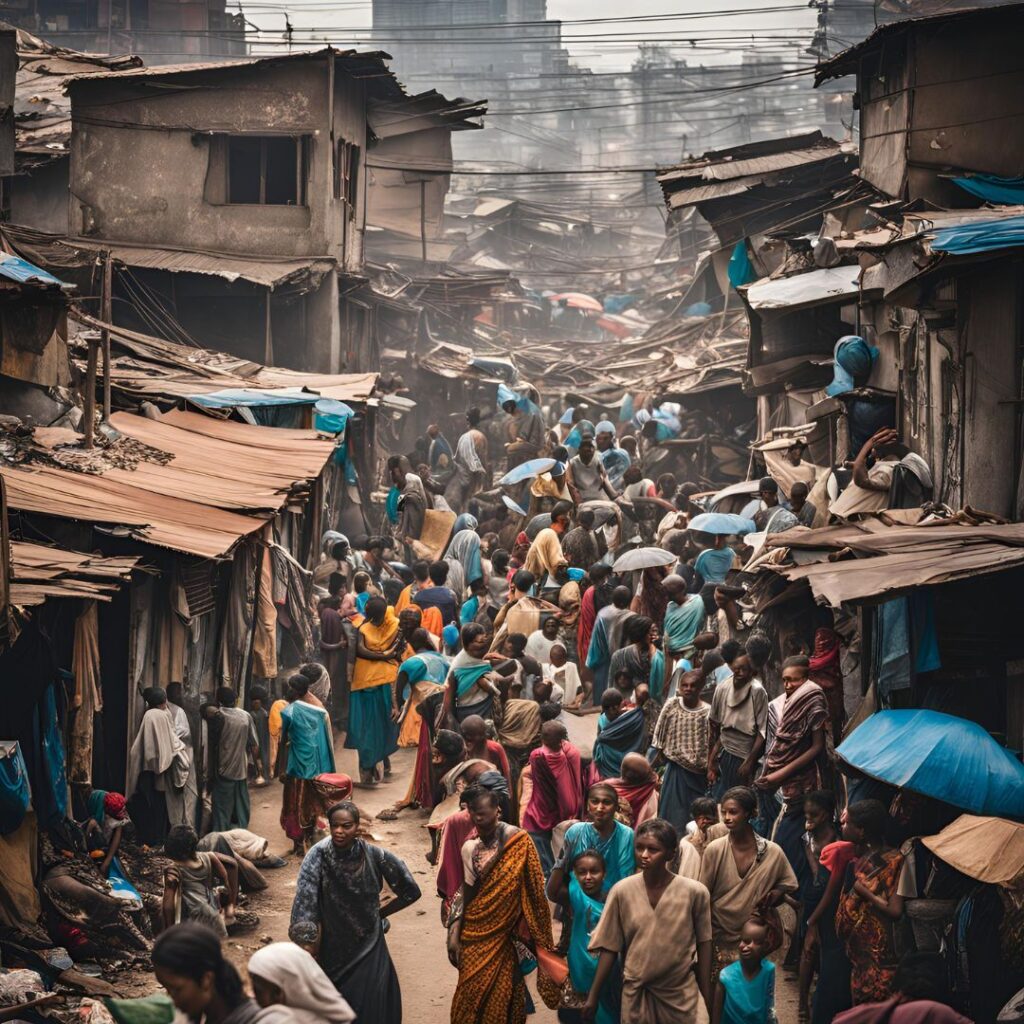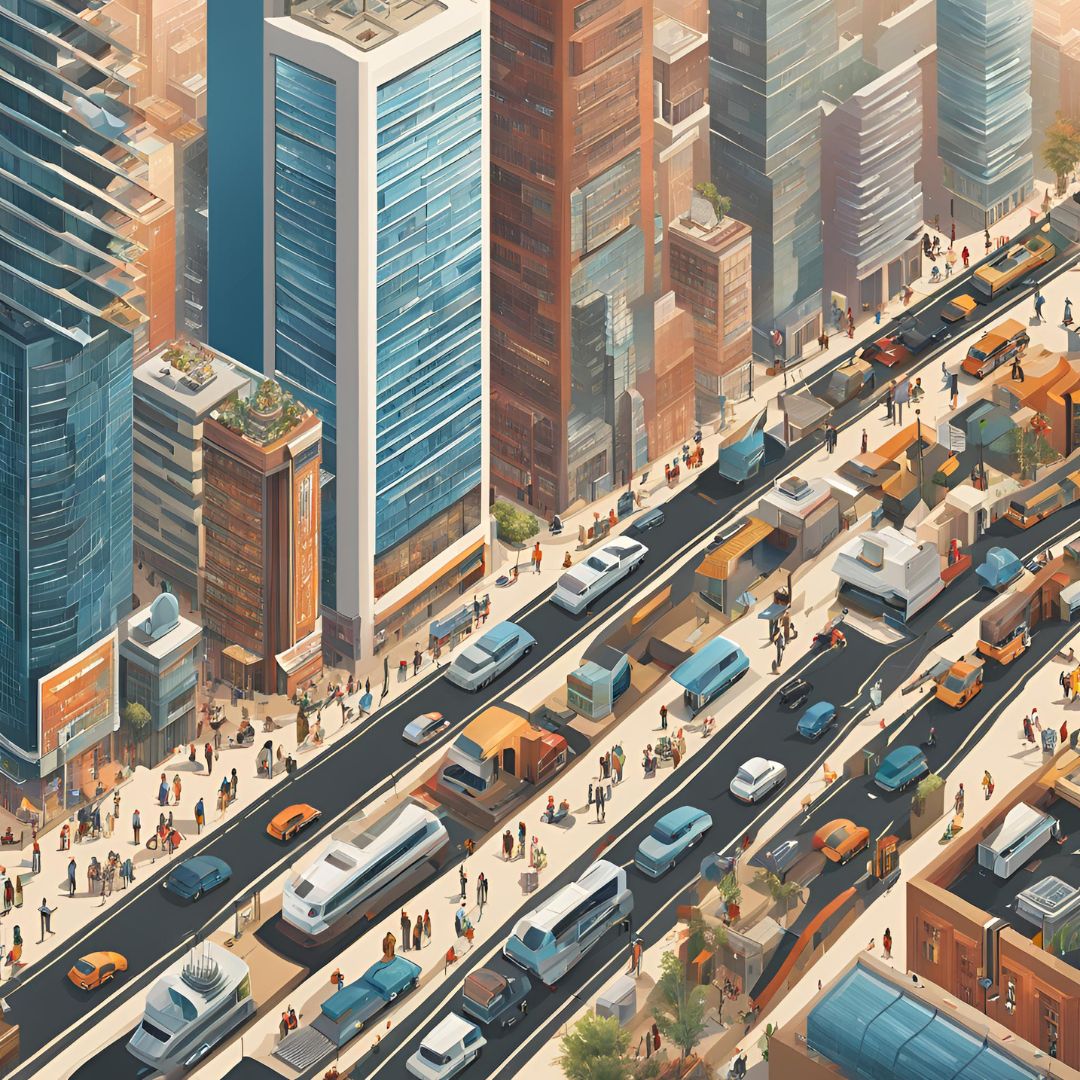Megacities, urban areas with populations exceeding 10 million people, are hubs of economic activity, cultural exchange, and technological advancement. However, the rapid growth and sheer size of these cities also bring significant challenges. This post delves into the myriad problems faced by megacities worldwide, exploring their causes, impacts, and potential solutions.
Introduction to Megacities
Megacities are defined by their massive populations and extensive urban landscapes. Cities like Tokyo, Delhi, Shanghai, and São Paulo exemplify the complexities and opportunities of such urban environments. While they drive economic growth and innovation, they also face unique challenges that require comprehensive and sustainable solutions.
Learn more about the world’s megacities
Overpopulation and Density
Causes
The allure of economic opportunities, better living standards, and modern amenities drives mass migration to megacities. This influx results in extreme population densities, often exceeding the city’s capacity to provide adequate resources and services.
Impacts
- Strain on Resources: Water, food, and energy supplies are often insufficient to meet the needs of the rapidly growing population.
- Living Conditions: Overcrowding leads to inadequate living conditions, with many residents living in slums or informal settlements.
Traffic Congestion and Transportation Issues
Causes
With millions of residents, megacities experience severe traffic congestion. Inadequate public transportation infrastructure, high vehicle ownership, and poor urban planning contribute to the problem.
Impacts
- Economic Losses: Traffic jams result in significant economic losses due to wasted time and reduced productivity.
- Air Pollution: Vehicle emissions contribute to poor air quality, posing health risks to the population.
Solutions
- Public Transit Investments: Expanding and improving public transportation can reduce reliance on private vehicles.
- Smart Traffic Management: Implementing smart traffic systems can optimize traffic flow and reduce congestion.
Housing Shortages and Homelessness
Causes
Rapid urbanization often outpaces the development of affordable housing. High land prices and inadequate housing policies exacerbate the issue.
Impacts
- Homelessness: A significant portion of the population may be forced to live on the streets or in temporary shelters.
- Substandard Housing: Many residents live in overcrowded and unsafe housing conditions.
Solutions
- Affordable Housing Initiatives: Governments and private sectors need to collaborate to build more affordable housing units.
- Innovative Housing Solutions: Utilizing prefabricated buildings and other innovative construction methods can speed up housing development.
Environmental Degradation
Causes
The concentration of industry, vehicles, and waste in megacities leads to significant environmental challenges, including air and water pollution, and the destruction of natural habitats.
Impacts
- Air Quality: High levels of pollutants in the air pose serious health risks, including respiratory and cardiovascular diseases.
- Water Contamination: Industrial and household waste often pollutes water sources, leading to waterborne diseases.
Solutions
- Green Policies: Implementing stricter environmental regulations can mitigate pollution.
- Sustainable Practices: Promoting sustainable practices such as recycling and renewable energy use can reduce the environmental footprint.
Public Health Concerns
Causes
High population densities, inadequate sanitation, and pollution contribute to public health challenges in megacities. Additionally, access to healthcare may be limited.

Impacts
- Disease Outbreaks: Overcrowded living conditions and poor sanitation can lead to the rapid spread of infectious diseases.
- Chronic Diseases: Pollution and lifestyle factors contribute to the rise of chronic diseases such as asthma and diabetes.
Solutions
- Improving Healthcare Access: Expanding healthcare infrastructure and services to reach underserved populations.
- Public Health Campaigns: Educating residents about hygiene, nutrition, and preventive healthcare measures.
Learn more about public health in urban environments
Economic Disparities
Causes
While megacities offer numerous economic opportunities, wealth distribution is often uneven. The gap between the rich and the poor can be stark, with many residents living in poverty despite the city’s overall prosperity.
Impacts
- Social Inequality: Economic disparities lead to social tensions and reduced social cohesion.
- Limited Access to Opportunities: Poorer residents may have limited access to education, healthcare, and employment opportunities.
Solutions
- Inclusive Economic Policies: Implementing policies that promote economic inclusion and support for small businesses.
- Education and Training Programs: Providing education and vocational training to improve job prospects for disadvantaged populations.
Infrastructure Strain
Causes
The rapid growth of megacities often outpaces the development of essential infrastructure such as roads, water supply, and waste management systems.
Impacts
- Service Interruptions: Inadequate infrastructure can lead to frequent power outages, water shortages, and waste management issues.
- Reduced Quality of Life: Infrastructure strain affects the overall quality of life, making daily activities more challenging for residents.
Solutions
- Infrastructure Investment: Governments and private sectors need to invest heavily in modernizing and expanding infrastructure.
- Smart City Technologies: Utilizing smart technologies can improve infrastructure efficiency and reliability.
Crime and Safety Issues
Causes
High population densities and economic disparities can contribute to increased crime rates in megacities. Insufficient law enforcement resources exacerbate the problem.
Impacts
- Public Safety: High crime rates can make residents feel unsafe, affecting their quality of life.
- Economic Costs: Crime has significant economic costs, from property damage to healthcare expenses for victims.
Solutions
- Community Policing: Engaging local communities in policing efforts to build trust and improve safety.
- Crime Prevention Programs: Implementing programs that address the root causes of crime, such as poverty and lack of education.

Governance and Urban Planning Challenges
Causes
Managing a megacity requires effective governance and urban planning. However, the scale and complexity of these cities often strain existing administrative capacities.
Impacts
- Inefficiency: Poor governance can lead to inefficient service delivery and resource allocation.
- Planning Failures: Inadequate urban planning can result in chaotic city growth and uncoordinated development efforts.
Solutions
- Integrated Urban Planning: Adopting comprehensive urban planning approaches that coordinate various aspects of city development.
- Strengthening Governance: Enhancing the capacity and transparency of local governments to manage urban challenges effectively.
Conclusion: Balancing Growth and Sustainability
Megacities represent both the pinnacle of human achievement and the complexity of modern urban living. Addressing the challenges they face requires a multifaceted approach, integrating sustainable practices, innovative technologies, and inclusive policies. By focusing on solutions that balance growth with sustainability, we can ensure that megacities continue to thrive and provide vibrant, livable environments for their residents.
Final Thoughts
As megacities continue to grow, it is crucial to address their challenges proactively. By leveraging technology, fostering community engagement, and implementing forward-thinking policies, we can create urban environments that not only accommodate large populations but also enhance the quality of life for all residents.

